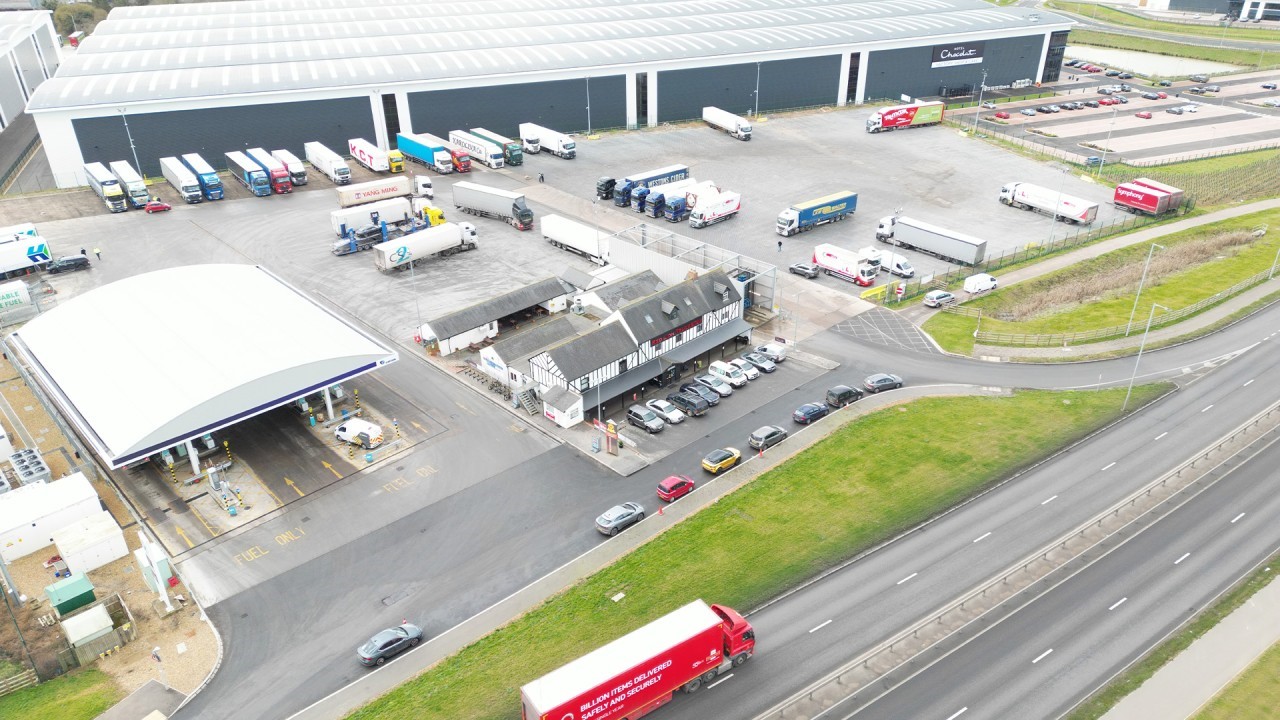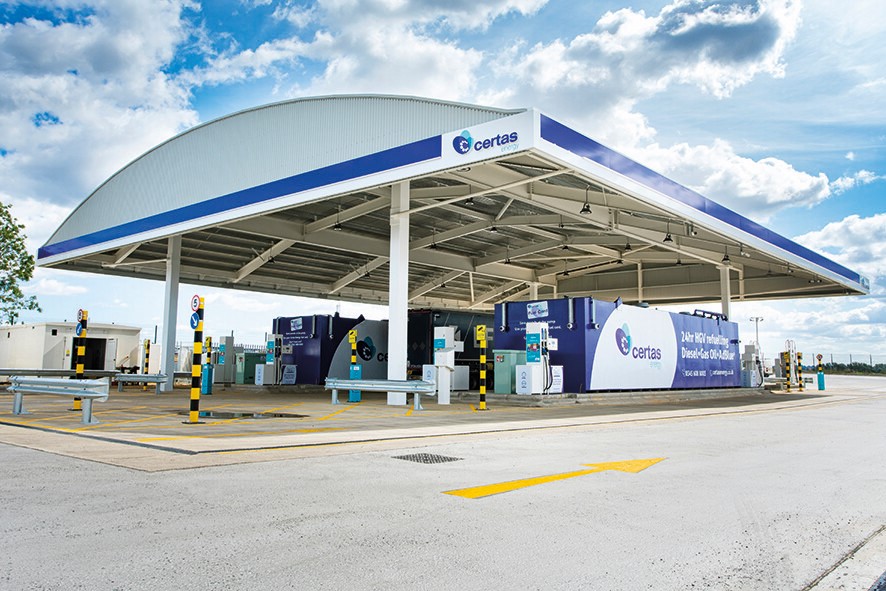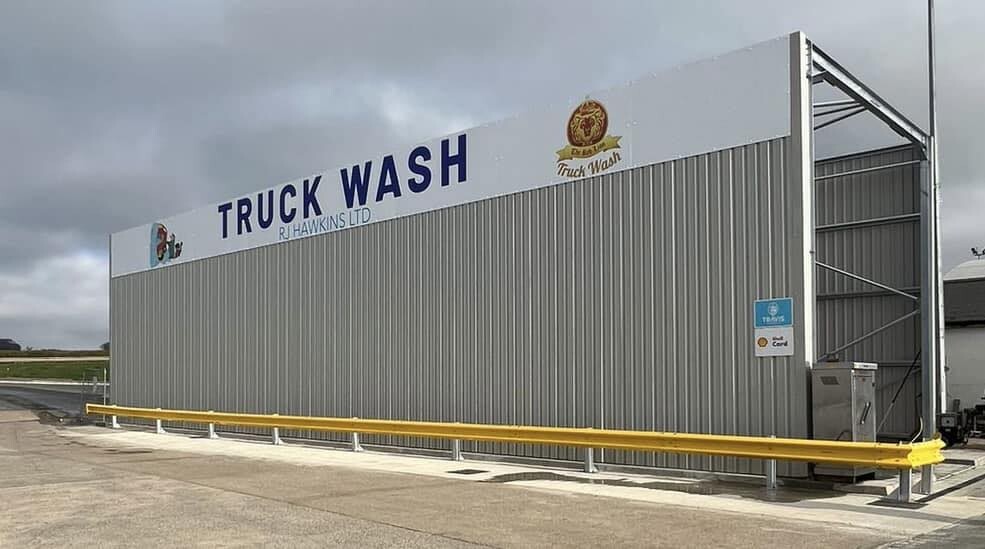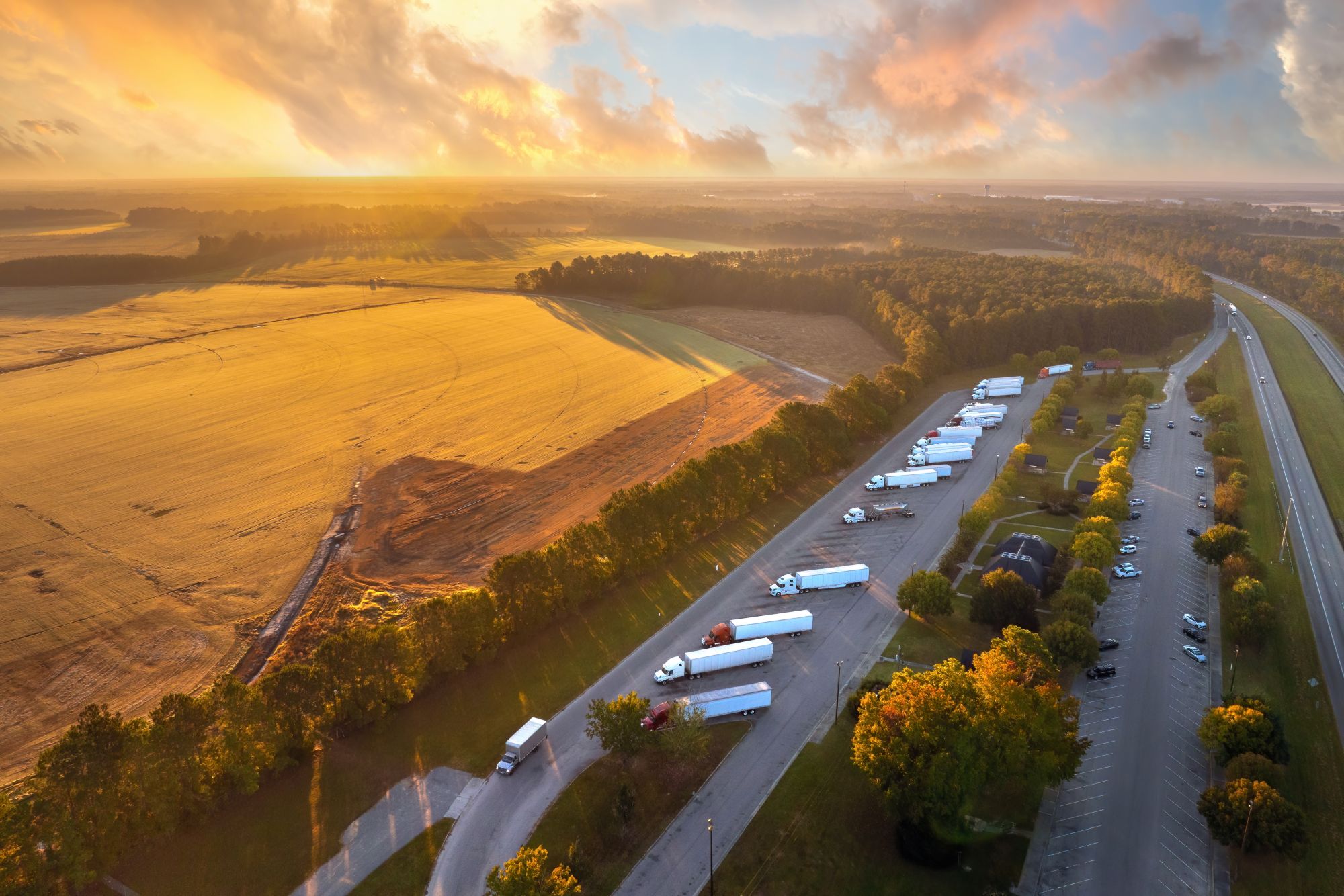
Susie Jones
Le Truckstop Red Lion - Un modèle de réussite
Créée: 28/08/2024
•
Mise à jour : 28/08/2024
À seulement 200 mètres de la M1, à la jonction 16, se trouve le relais routier Red Lion. Fondé il y a plus de 30 ans, le Red Lion est devenu la destination privilégiée des conducteurs. Décrit comme le paradis des routiers, son ambiance communautaire, sa nourriture délicieuse et sa vaste gamme d'installations font de ce relais primé un grand favori. Ali Sadrudin, opérateur du site, nous parle du site.
"Le site peut accueillir plus de 200 camions par nuit. Il y a une station-service à grande vitesse, qui distribue non seulement du diesel et de l'AdBlue, mais aussi du gaz naturel comprimé (GNC). Il y a également une nouvelle station de lavage à trois brosses avec personnel. Le bâtiment d'accueil comprend un restaurant et un bar, un magasin d'accessoires pour camions, une laverie, un centre de jeux, des distributeurs automatiques de billets, des douches et des toilettes surveillées, ainsi que des espaces de réception et de réunion".

Installations
Certains considèrent les relais routiers comme un simple lieu de repos pour les chauffeurs, mais ils jouent également un rôle crucial dans l'amélioration du bien-être des chauffeurs. Chez SNAP, nous savons qu'il est impératif de fournir aux conducteurs des installations propres. Mais de quoi d'autre les camionneurs ont-ils besoin ?
"Je crois que les clients recherchent l'essentiel, mais bien fait. De la bonne nourriture, des installations propres et la sécurité pour leurs véhicules et leurs chargements. Si vous pouvez leur offrir cela, vous aurez des clients satisfaits et fidèles", déclare Ali.
Un rapide coup d'œil sur la page Facebook du Red Lion montre qu'ils suivent ce mantra et que cela fonctionne. Des commentaires tels que "un relais routier exceptionnel, le meilleur du pays" et "peut-être l'un des meilleurs relais routiers d'Angleterre" viennent étayer les plus de 4 000 avis positifs sur Google.
Sécurité et sûreté
Les repas délicieux et les installations propres ne sont pas les seules choses auxquelles Ali et son équipe accordent de l'importance. Ils prennent également la sécurité très au sérieux. En 2020, on estimait à plus de 4 000 le nombre de délits commis au Royaume-Uni contre des poids lourds, des marchandises et des cargaisons, ce qui représentait un coût de 250 millions de livres sterling pour le pays. Des sites comme le Red Lion ont mis en place des mesures de sécurité pour réduire ce nombre.
Ali déclare que "SNAP nous a aidés à obtenir la certification TAPA PSR de niveau 3". En février 2023, le Red Lion s'est vu décerner le Park Mark Freight Award. Ali nous explique quelles mesures de sécurité ont été prises pour obtenir cette récompense.
"Le site est sécurisé de par sa conception. Nous avons des gardes qui patrouillent 24 heures sur 24, 7 jours sur 7, et une tierce partie qui surveille le système de vidéosurveillance. Nous avons une clôture ininterrompue de 3 mètres autour du site, avec des caméras fixes qui surveillent tous les points de la clôture, afin de détecter toute entrée non autorisée ou tout dommage aux panneaux de la clôture. Le site est également éclairé selon les niveaux de luminosité requis par la police, et des caméras de détection de mouvement sont placées à des endroits stratégiques du site pour détecter tout mouvement non autorisé et s'assurer que chaque partie du site est surveillée. Un système ANPR détecte les plaques d'immatriculation qui entrent et sortent du site, et une alerte de réponse rapide est envoyée à la police en cas de besoin".
Le Red Lion a également pris des mesures supplémentaires pour que les conductrices se sentent à l'aise et en sécurité lors de leurs visites. Des douches, des toilettes et des vestiaires réservés aux femmes sont disponibles. Ces mesures ne sont pas passées inaperçues puisqu'en janvier 2023, le relais routier a été classé parmi les meilleurs relais routiers du Royaume-Uni pour les conductrices de poids lourds.

Revenus et expansion
L'un des nombreux avantages de l'utilisation de SNAP par les gestionnaires de sites est l'amélioration de la rentabilité et de l'optimisation. En tant que client fondateur de SNAP, Ali explique comment SNAP a permis à l'entreprise d'augmenter ses revenus depuis son adhésion en 2009.
"Il s'agissait d'un processus graduel au fil des ans, mais comme les habitudes de consommation des automobilistes changent continuellement et qu'ils n'utilisent plus d'argent liquide, je peux imaginer qu'un nouveau site qui s'attaquerait au SNAP aurait des retombées immédiates. Environ 65 % des recettes totales du site proviennent de SNAP.
Les choses ont certainement beaucoup changé dans le secteur depuis 2009. Ali explique comment le site a dû s'adapter à l'évolution du secteur et à l'augmentation de la demande.
"Au départ, le site ne pouvait accueillir que 130 poids lourds par nuit, mais en 2018, il a été étendu à plus de 200 places pour répondre à la demande accrue", explique Ali. Pour les conducteurs et les flottes qui utilisent SNAP, ces 200 places deviennent facilement réservables.
Quatre ans plus tard, le site a connu une nouvelle expansion avec l'introduction d'une nouvelle installation de lavage de camions. Inaugurée en novembre 2022, cette installation ultramoderne de lavage de camions à trois brosses convient à la plupart des LGV.

Rejoindre SNAP en tant que partenaire de service
En rejoignant SNAP, votre établissement est présenté à 160 000 chauffeurs et 7 000 flottes. Pour les relais routiers, comme le Red Lion, qui s'efforcent constamment d'offrir de nouvelles initiatives et installations à leurs clients, SNAP offre l'opportunité de le faire.
"SNAP a permis au site d'offrir une méthode de paiement alternative qui ne peut que profiter au client et l'attirer sur le site", déclare Ali.
Les avantages de SNAP
Plus de 160 000 conducteurs utilisent le compte SNAP. Il est donc essentiel de respecter des normes élevées. Bien que les partenaires de service qui acceptent les paiements sur SNAP Account soient des entreprises indépendantes, nous examinons chaque site et veillons à ce qu'il réponde à nos normes. En outre, notre équipe réseau est disponible à tout moment.
"SNAP nous a toujours soutenus depuis notre première adhésion", déclare Ali.
Lorsqu'on lui demande ce qu'il apprécie le plus chez SNAP, Ali répond : "c'est le niveau de service, ils se sont surpassés pour adapter le système de billetterie à nos besoins".
Et son conseil aux propriétaires de parcs à camions qui envisagent d'ouvrir leur site aux chauffeurs SNAP ?
"Faites-le ! Pourquoi ne voudriez-vous pas attirer des clients supplémentaires sur votre site ?".
S'inscrire à SNAP
Pour améliorer votre rentabilité et optimiser le fonctionnement de votre site, rendez-vous sur snapacc.com.



